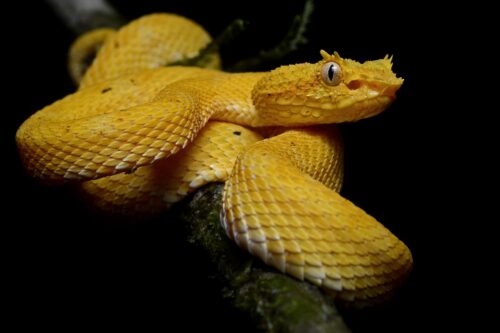Image Courtesy of Flickr.
In the gloomy hours of the night, a hungry pit viper finds itself in search of a meal. Despite the darkness, the snake’s ability to locate its prey is strong and precise without visual cues. How is this possible? The viper utilizes a unique sensory system—a thermal imaging pit organ where neurons embedded in a tissue at the back of the pit can detect temperature changes as small as one milli-Kelvin, exposing all of the snake’s nearby food options.
In a recent study, Yale physicists Isabella Graf and Benjamin Machta were interested in understanding how these sensory organs could detect such small temperature changes. Using statistical physics concepts and information theory, the researchers constructed a simple mathematical model that describes the basic parameters of infrared sensing. “Our model focuses on how information in temperature-sensitive ion channels is aggregated into a collective neural response,” Graf said. “We have a mathematical equation for how these channels influence voltage dynamics in single neurons. We use rather simple dynamic equations that don’t depend on space, but just on time.”Many biological sensory systems can detect small changes, meaning that the scientists’ model may have applications outside of the pit viper study. There are numerous examples where it’s important to recognize the use of a feedback system for sensory adaptation—for instance, in bacteria like E. coli, which can sense and move towards certain chemicals in their environment. The researchers aim to answer questions of how collective sensory organs can detect what individual senses can’t catch on their own—a striking example of biological innovation.

